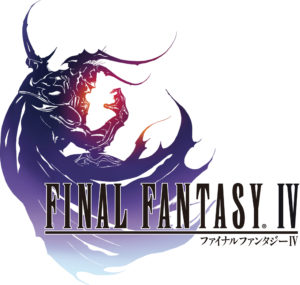
My introduction to video game RPGs came in the form of Dragon Warrior for the NES, a game unlike any I had played before. Oh, sure, there had been The Legend of Zelda (and its awkward sequel), which had a wide, open world to explore and a save system that meant the game itself was to be played over the weeks and months instead of in one-off sessions, but Dragon Warrior was my first experience with “traditional” RPG gameplay, where it was your decisions and planning that determined success or failure instead of quick reactions or clever button inputs.
Dragon Warrior also had a story that unfolded during the game itself, not just in the game’s instruction manual, which was also a rarity at the time. And, truth be told, it’s a bare-bones story that honestly doesn’t have much more going for it than you’d find in such an instruction manual, but it was what we had at the time, so I ate it up. And I was hungry for more when Squaresoft’s Final Fantasy landed on American shores the following year.
Final Fantasy literally took me years to beat. Like Dragon Warrior, it had a story, but one that was still secondary to the gameplay, and the endgame was grueling to an impatient youngster such as myself who didn’t have the patience for the JRPG grind. In fact, I may not have beaten it until I’d already played the next installment of the series I got to play: Final Fantasy II.
Which is actually Final Fantasy IV. And that might confuse some of you. But bear with me.
Background
 The Final Fantasy series saw two more entries on the NES before debuting on the Super NES as Final Fantasy IV in Japan, but since those other two games never made it stateside at the time, they made the wise localization decision to call it II here in the West (this wouldn’t have repercussions until Final Fantasy VII came out many years later, but that’s neither here nor there). But there were two big things about Final Fantasy‘s SNES debut: better technology meant a better medium for presenting a story in ways NES RPGs never could, and years of practice meant the developer had polished the game formula quite a bit as well.
The Final Fantasy series saw two more entries on the NES before debuting on the Super NES as Final Fantasy IV in Japan, but since those other two games never made it stateside at the time, they made the wise localization decision to call it II here in the West (this wouldn’t have repercussions until Final Fantasy VII came out many years later, but that’s neither here nor there). But there were two big things about Final Fantasy‘s SNES debut: better technology meant a better medium for presenting a story in ways NES RPGs never could, and years of practice meant the developer had polished the game formula quite a bit as well.
Final Fantasy IV was the first game I ever played that felt like I was playing through a novel. Unlike the original game, where the four party members were simply named after my friends and me, now I was controlling a party of characters that had their own personalities and their own plot-related backgrounds. It was incredible, and it came when I was at just the right age to start appreciating storytelling of a more complex nature (i.e., something beyond the “good guys temporarily defeat bad guy and maintain status quo” formula).
Also it had some really catchy music for the time.
The Early 90s Context
There weren’t a lot of games like Final Fantasy IV when it first came out, at least not in the West. Quite frankly, it was something of a “game for nerds,” and this is back in a time when all video games were for nerds, compared to modern standards. I suppose it’s no surprise that a video game that plays like a fantasy novel would be more the bailiwick of kids who were more into Tolkien than, well, beating up the kids who were into Tolkien.
For as much as I teased the stories of Dragon Quest and Final Fantasy I for being pretty simplistic, in retrospect, the story of Final Fantasy IV isn’t exactly all that novel-sounding by today’s standards, either, and to say that it’s ridden with plenty of cliches (including cliches constrained within the narrative itself!) would perhaps be an understatement–but one also needs to consider that this was a title that was a progenitor for a number of (J)RPG tropes that have since become old hat (though in fairness, “whale-shaped spaceship that flies you to the moon” is still slightly unique).
Still, for the time, there was a lot of emotional impact that the game delivered, unlike anything my adolescent game-playing mind had ever encountered. Characters actually died in this game. And while it eventually turns out, time and time again, that characters you think had died weren’t actually dead after all (with one notable exception), you didn’t know that your first time through the game, so the impact was real and raw. The world within the game would change as you played through the story. There were shocking plot twists at a time when most video games didn’t even have a plot to twist.
Also there was the triumphant return of Rydia during the battle with Golbez down in the Dwarven Kingdom, which to this day remains one of the most memorable events in any video game ever. I remember screaming at my TV in excitement with my young little mind completely blown by such a delightful surprise.
The Impact
I’ve mentioned several times above that this game was like playing a novel. This was at a time when I was experimenting with my own creative writing (at an age where my friends thought it was super, super weird that I’d ever willingly write something that wasn’t for schoolwork), and so I paid a lot of attention to the writing in the game.
Here’s the deal, though: I didn’t really fully comprehend the notion that I was playing a game that had been translated into English, from Japanese, at a time when video game localization was not, shall we say, a high form of art. There were numerous awkward and clunky turns of phrase that, not knowing any better, I assumed were fancy, highfalutin’ ways of saying things that I’d just never encountered in school or in my other books. I came across words that I didn’t know, and in many cases, despite them not being the right word for the situation, I wound up being forced to think about the context to determine what the story was trying to say.
It’s weird, in retrospect, that I didn’t see these things for the legitimate flaws that they were, but they do say that it’s the flaw that makes the masterpiece, after all.
But that’s the thing: the inherent awkwardness of the writing and the clumsiness of the translation (despite my not recognizing them for what they were, at the time) forced me to engage with the story and the writing on a deeper level in order to glean the emotional impact I knew it wanted from me. And maybe that’s why, subconsciously or otherwise, this was the game that made me think, “Yes, this is a medium where you can tell a story.”
That isn’t an idea that’s anywhere near as contentious as it is today, but back in the 16-bit era, video games as a storytelling platform were only barely a thing. And I was glad that they were my thing.
Legacy
Flash forward to the modern day, and here I am, working in Japanese-to-English localization.
It’s not something I was ever consciously working toward (I majored in Biology, of all things, but I also started studying Japanese at the time). But I think some part of me really fell in love with writing and storytelling thanks to this game, and when I went on into adulthood and learned how to speak and read Japanese, I also had a leg up, in a way, on how not to do a great localization job–which sounds like a backhanded compliment, but I more just mean it as a way of learning from mistakes, even if they weren’t mistakes I personally made.
Lastly, I’d be remiss in talking about this game and its writing and localization without a shoutout to a fellow translator and localization guru, Clyde Mandelin, who has drafted up a very thorough analysis of the game’s various localizations (plural!) that you can see here; I don’t have any real direct experience with the other versions, childhood nostalgia or otherwise, but if you’re curious about that sort of thing, hopefully you’ll find his analysis of interest (just be warned that it’s a pretty deep rabbit hole to go down!).
